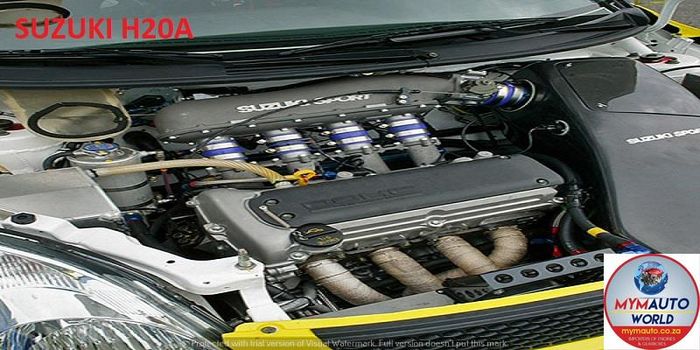Locating the Best Offers on Opel Corsa Engine Components
Locating the Best Offers on Opel Corsa Engine Components
Blog Article
Checking Out the Inner Functions of a Compact Car's Engine System
As chauffeurs, we commonly take for provided the elaborate processes that happen within the confines of our lorry's engine system. In this exploration of a compact automobile's engine system, we will unravel the internal workings of this mechanical harmony, shedding light on the secrets that drive us ahead on our everyday trips.
Combustion Refine Overview
The combustion process in a portable car's engine system is an essential mechanism that efficiently converts gas into power to power the car. This process occurs within the combustion chamber of the engine, where gas and air mix, spark, and create controlled explosions. The combustion procedure is composed of 4 major stages: intake, compression, power, and exhaust.
Throughout the consumption stage, the piston relocates downward, attracting a mix of air and gas right into the combustion chamber. The following phase, compression, includes the piston moving upwards, compressing the air-fuel combination to raise its effectiveness. Consequently, in the power stage, the spark plug sparks the pressed blend, causing a quick development of gases that forces the piston back down. This descending movement produces the power required to drive the vehicle. In the exhaust phase, the burnt gases are removed from the burning chamber with the exhaust valve, preparing the chamber for the next cycle. This cyclic combustion procedure is fundamental to the operation of a compact car's engine system, guaranteeing reliable energy conversion for propulsion.
Piston and Cylinder Interaction

The piston's precise fit within the cyndrical tube is necessary for preserving ideal compression and preventing energy loss during burning. Limited clearances between the piston and cylinder wall surfaces guarantee effective securing, allowing the piston to move smoothly without allowing gases to leakage past. Appropriate lubrication is likewise vital to minimize friction and wear in between these parts, boosting durability and efficiency.
Furthermore, the design and materials utilized in manufacturing the piston and cylinder effect engine performance and resilience. Modern engines typically employ lightweight yet resilient materials like light weight aluminum alloys for pistons and cylinder liners to decrease inertia and boost thermal efficiency. Generally, the unified communication between the piston and cyndrical tube is essential to the engine's performance and overall efficiency.
Fuel Shot System Functionality
Gas injection systems in portable automobile engines play an important role in precisely supplying gas to the combustion chamber for regulated and reliable ignition. The fuel shot system operates by injecting gas into the burning chamber at the ideal moment throughout the engine's operation (opel corsa engine). This accurate timing makes sure that the fuel mixes evenly with the air for appropriate combustion, bring about improved fuel effectiveness and minimized emissions
There are primarily 2 kinds of fuel shot systems utilized in compact automobile engines: port fuel injection (PFI) and straight gas shot (DFI) PFI systems inject gas into the consumption port before the consumption shutoff, while DFI systems inject fuel directly right into the combustion chamber. Both systems have their benefits, with DFI using much better gas atomization and PFI giving an extra economical remedy.
Understanding Engine Cooling Devices
Efficient operation of a small vehicle's engine relies greatly on the effectiveness of its cooling mechanisms. Engine air conditioning is essential to protect against getting too hot, which can bring about significant damages and decreased performance. The cooling system in a small automobile generally consists of numerous elements interacting to manage the engine temperature level. One vital component is the radiator, which makes use of coolant to absorb heat from the engine. As the warm coolant moves via the radiator, it launches warm into the air, cooling prior to returning to the engine. The water pump flows the coolant via the engine and radiator, guaranteeing a regular circulation to control temperature level. Additionally, the thermostat assists control the coolant flow to preserve optimum engine temperature. Some lorries additionally have cooling down fans that activate when added air conditioning is needed, such as throughout rush hour or heat. Recognizing these engine cooling mechanisms is essential for maintaining the performance and long life of a compact car's engine system.

Exhaust System Elements Explained
The ideal performance of a compact automobile's engine cooling systems depends on a complementary system understood as the exhaust system, which consists of numerous necessary parts for making sure efficient discharges and engine efficiency. The exhaust manifold collects exhaust gases from the engine's cylinders and courses them to the catalytic converter.
One vital part of the exhaust system is the oxygen sensing unit, which keeps track of the oxygen levels in the exhaust gases to aid regulate fuel usage and ensure optimum engine performance. opel corsa engine. Additionally, the resonator might be present in some exhaust systems to reduce noise levels. Generally, the exhaust system plays a vital role in keeping engine efficiency, decreasing unsafe exhausts, and making sure a quieter driving experience for compact lorry proprietors

Verdict
In final thought, the portable car's engine system is a complicated mix of components that collaborate to facilitate the burning process, convert gas right into energy, and eliminate waste gases. Recognizing the internal operations of the engine system, consisting of look at here now the piston and cylinder communication, fuel shot system, engine air conditioning systems, and exhaust system this link parts, is important for maintaining optimal efficiency and effectiveness of the vehicle.
The combustion process in a compact vehicle's engine system is a vital system that efficiently converts fuel into power to power the lorry.Gas shot systems in compact lorry engines play an essential role in exactly delivering fuel to the combustion chamber for regulated and efficient ignition.There are mostly 2 kinds of fuel injection systems made use of in small lorry engines: port fuel injection (PFI) and direct gas injection (DFI) Understanding these engine cooling systems is vital for preserving the performance and long life of a compact lorry's engine click here now system.
The ideal performance of a portable car's engine air conditioning devices depends on a corresponding system known as the exhaust system, which comprises various important parts for making sure efficient emissions and engine efficiency.
Report this page